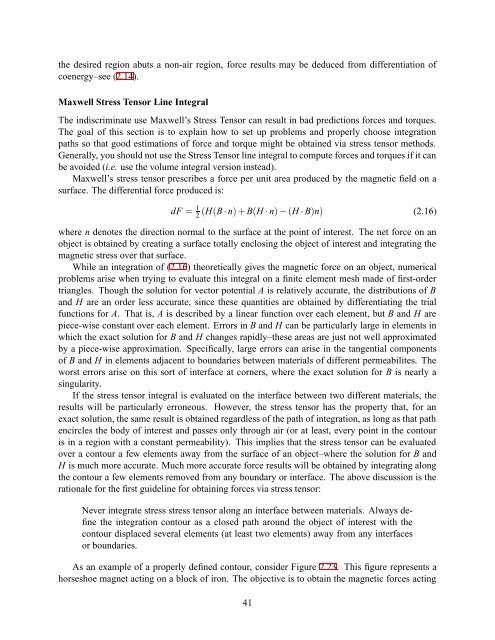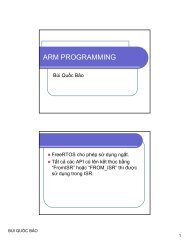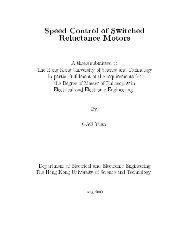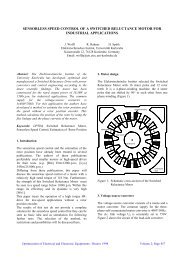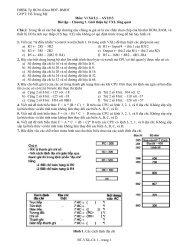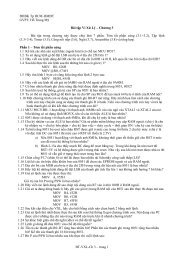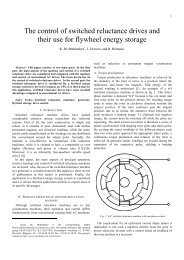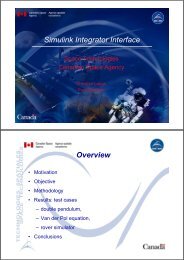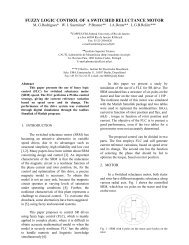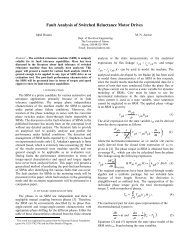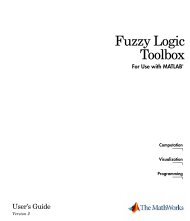Finite Element Method Magnetics
Finite Element Method Magnetics
Finite Element Method Magnetics
- No tags were found...
You also want an ePaper? Increase the reach of your titles
YUMPU automatically turns print PDFs into web optimized ePapers that Google loves.
the desired region abuts a non-air region, force results may be deduced from differentiation ofcoenergy–see (2.14).Maxwell Stress Tensor Line IntegralThe indiscriminate use Maxwell’s Stress Tensor can result in bad predictions forces and torques.The goal of this section is to explain how to set up problems and properly choose integrationpaths so that good estimations of force and torque might be obtained via stress tensor methods.Generally, you should not use the Stress Tensor line integral to compute forces and torques if it canbe avoided (i.e. use the volume integral version instead).Maxwell’s stress tensor prescribes a force per unit area produced by the magnetic field on asurface. The differential force produced is:dF = 1 2(H(B · n)+B(H · n) − (H · B)n) (2.16)where n denotes the direction normal to the surface at the point of interest. The net force on anobject is obtained by creating a surface totally enclosing the object of interest and integrating themagnetic stress over that surface.While an integration of (2.16) theoretically gives the magnetic force on an object, numericalproblems arise when trying to evaluate this integral on a finite element mesh made of first-ordertriangles. Though the solution for vector potential A is relatively accurate, the distributions of Band H are an order less accurate, since these quantities are obtained by differentiating the trialfunctions for A. That is, A is described by a linear function over each element, but B and H arepiece-wise constant over each element. Errors in B and H can be particularly large in elements inwhich the exact solution for B and H changes rapidly–these areas are just not well approximatedby a piece-wise approximation. Specifically, large errors can arise in the tangential componentsof B and H in elements adjacent to boundaries between materials of different permeabilites. Theworst errors arise on this sort of interface at corners, where the exact solution for B is nearly asingularity.If the stress tensor integral is evaluated on the interface between two different materials, theresults will be particularly erroneous. However, the stress tensor has the property that, for anexact solution, the same result is obtained regardless of the path of integration, as long as that pathencircles the body of interest and passes only through air (or at least, every point in the contouris in a region with a constant permeability). This implies that the stress tensor can be evaluatedover a contour a few elements away from the surface of an object–where the solution for B andH is much more accurate. Much more accurate force results will be obtained by integrating alongthe contour a few elements removed from any boundary or interface. The above discussion is therationale for the first guideline for obtaining forces via stress tensor:Never integrate stress stress tensor along an interface between materials. Always definethe integration contour as a closed path around the object of interest with thecontour displaced several elements (at least two elements) away from any interfacesor boundaries.As an example of a properly defined contour, consider Figure 2.23. This figure represents ahorseshoe magnet acting on a block of iron. The objective is to obtain the magnetic forces acting41


